What We Learned About Facebook Advertising close
In Codegent College

We’ve been successfully developing our own mobile apps for a couple of years now. Early on we learned that one of the best ways to increase downloads was to cross promote relevant apps as a series or brand. We started with “Learn” but when we build our first kids app we realised the codegent umbrella brand did not really fit.
We launched kizzu with the ambition to build a brand that parents could trust. It was clear that parents were highly engaged on the subject of education and kids apps so we felt kizzu was perfectly placed to provide interesting insights and also build it’s name, we just needed a captive audience.
To get started we went about building up our facebook community. With a clear initial aim in mind - we wanted to reach 3,000 page likes to start practicing our content strategy with. We started analysing our target group, their needs and wants. After looking into the traditional marketing principles, we tried to utilize the knowledge we’ve gained from other PPC campaigns like Google Adwords. Only to find out real quickly, that Facebook is different. There’s one significant aspect that makes Facebook Advertising slightly more complicated: People don’t actively look for things (yet)!
If you advertise on Facebook, you disturb users in what they are doing at the moment. While you can reach a Google user with an AdWords advertisement in the moment of active search, a Facebook user is busy checking status updates and messages when you actually want him or her to look at your beautiful ad. Therefore Facebook ads have to be more conspicuous to catch peoples’ eye. They have to make users stop what they are currently doing and shift their attention to your product, company, offer or whatever you’re advertising. That’s a formidable challenge.
After a few weeks of experimenting, rotating and tweaking we found out what works best for us. Before I get straight down to analysing the nitty-gritty, I want to give you our top 3 best performing Facebook advertisements of this campaign (concerning conversion):
1)
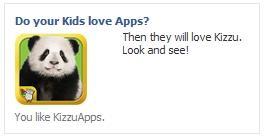
2)
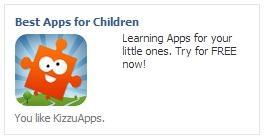
3)
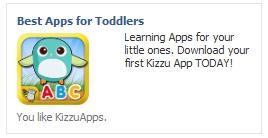
Altogether we created 30 different advertisements within one campaign and analysed the impacts of minor changes to copy and creative. Here’s what we learned about Facebook Advertising:
1) An outstanding image is half the battle
Your image really has to be an eye catcher. Also, it has to be relevant and reinforce your message. Easier said than done you think? Oh yes! With this advertisement, for example, we didn’t really cut it:
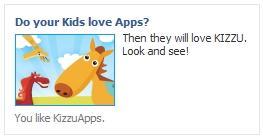
As you can see, the copy is the same as in our most successful ad. It is the image that led to the failure of this advertisement. Although we considered it relevant, it doesn’t really scream “apps for children”. This could be an advertisement for books, movies, toys or anything else for children - it is just not obvious enough. Also it’s lacking simplicity and doesn’t look good at this small size of 100 x 70 px (looks great as a picture on the wall though).
2) A question in the headline makes users interact
This:

is just so much more engaging than this:
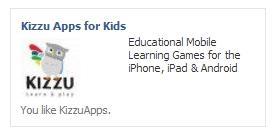
don’t you think? There are obviously more reasons for that, but the one I want to point out here is that a question in the headline asks for an answer. And many users tend to answer and give their confirmation with a Like.
3) Pure information based copy doesn’t get you anywhere
Emotion is the key to conversion heaven! The second reason why the lovely panda ad worked far better than the logo ad is the copy. Although
“Kizzu Apps for Kids. Educational Mobile Learning Games for the iPhone, iPad & Android”
is exactly who we are and what we do, it’s not what people want to read at this point. Our most successful ads were:
- short, simple and to the point
- emotional, using catchwords like “love”, “best”, “your little ones”
- using a reasonable amount of Capital Letters to highlight words that should stand out
- featuring a Call to Action, such as “Try for FREE now!”, “Download your first Kizzu App TODAY!”, “Look and see!”
- telling the user the benefits of our product, conveying the message that we produce learning apps that their children will love.
4) Constant testing and rotating will help you achieve your goals
Simply put: you can not create one single ad, run it for two month and expect your revenues to go through the roof. Facebook ads need constant change. We moved around a lot of ad copy and images and tested what works and what doesn’t. Also, we ran several ads at a time and let them compete against each other. Facebook gives you valuable insights in their Ads Management Tool that let you analyse your campaign in good detail. Another reason why it is advisable to rotate ad creative is that Facebook seems to serve ads with performance history less than newer ones.
5) You don’t have keywords, but you have targeting
You can’t define keywords for your Facebook ads as you can for your Google AdWords, but you have another powerful tool that reduces wastage enormously: Facebook Targeting. We targeted our campaign to people who:
- live in specific countries that we know buy our apps already
- speak a certain language - our apps are mostly in English
- belong to a specific age group
- have interests in Education/Teaching OR are parents with a child 0-12 years
These targeting options are extremely helpful and if used wisely can save you a lot of money.
These are our 5 major findings we learned from advertising on Facebook. What have you learned? Feel free to share your experiences in the comments.